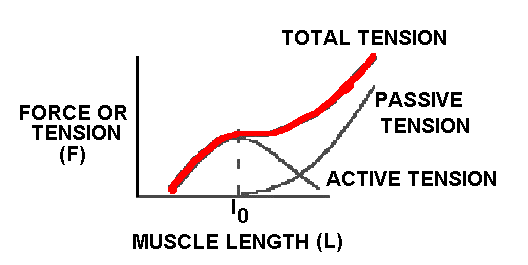

| A muscle's length-tension curve illustrates how its force comes from two sources: |
Active tension derives from the interaction between myosin and actin active tension.
Passive tension can develop in the muscle's complex connective tissue. |
|---|
Force-angle curves: Joint angle replaces length as the x-axis variable. To use a flexor muscle group as an example, flexors are short when the joint is flexed and elongated when the joint is extended.
Moment-angle curves: As long as a muscle's moment arm is relatively constant throughout the range of motion of the joint that the muscle crosses, then the muscle's moment-angle curve has a shape that is similar to that of its force-angle curve.